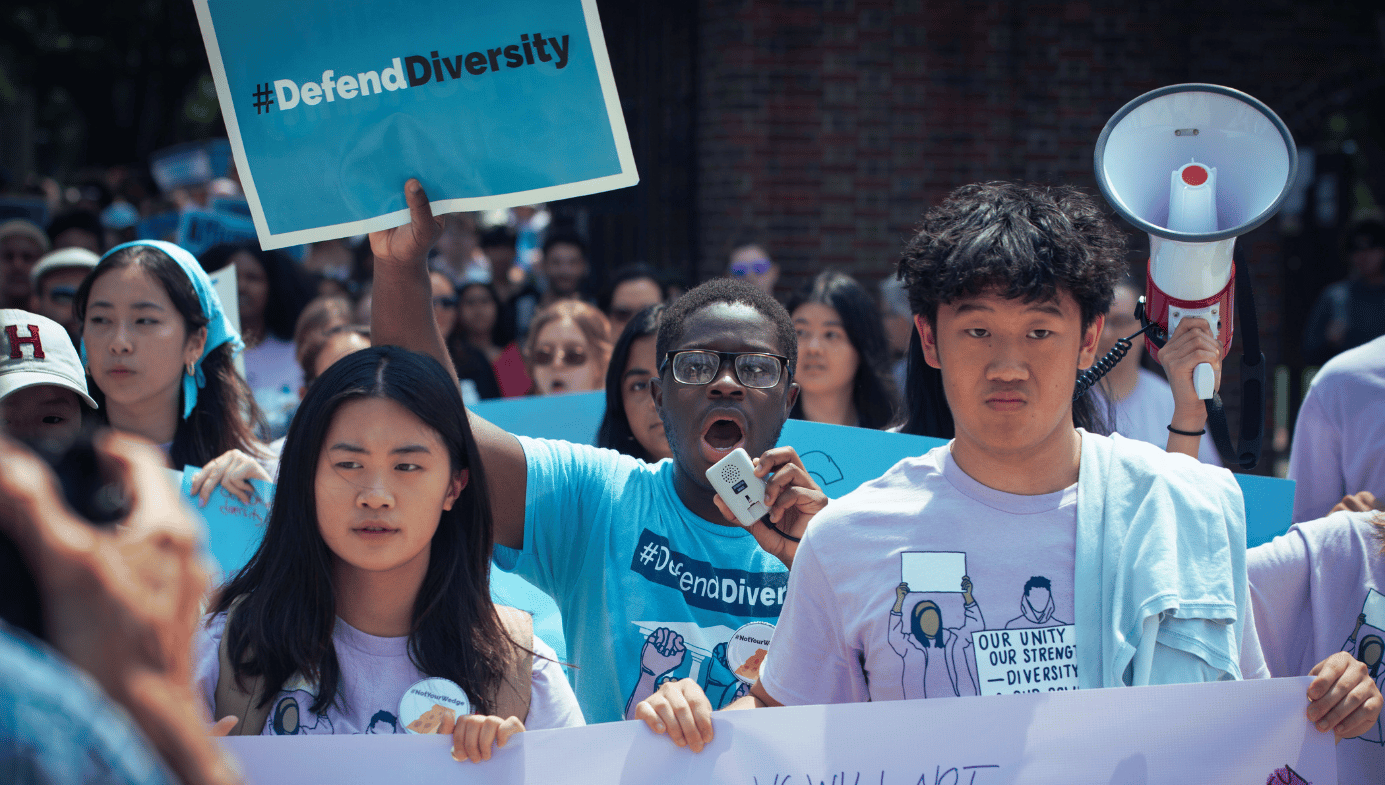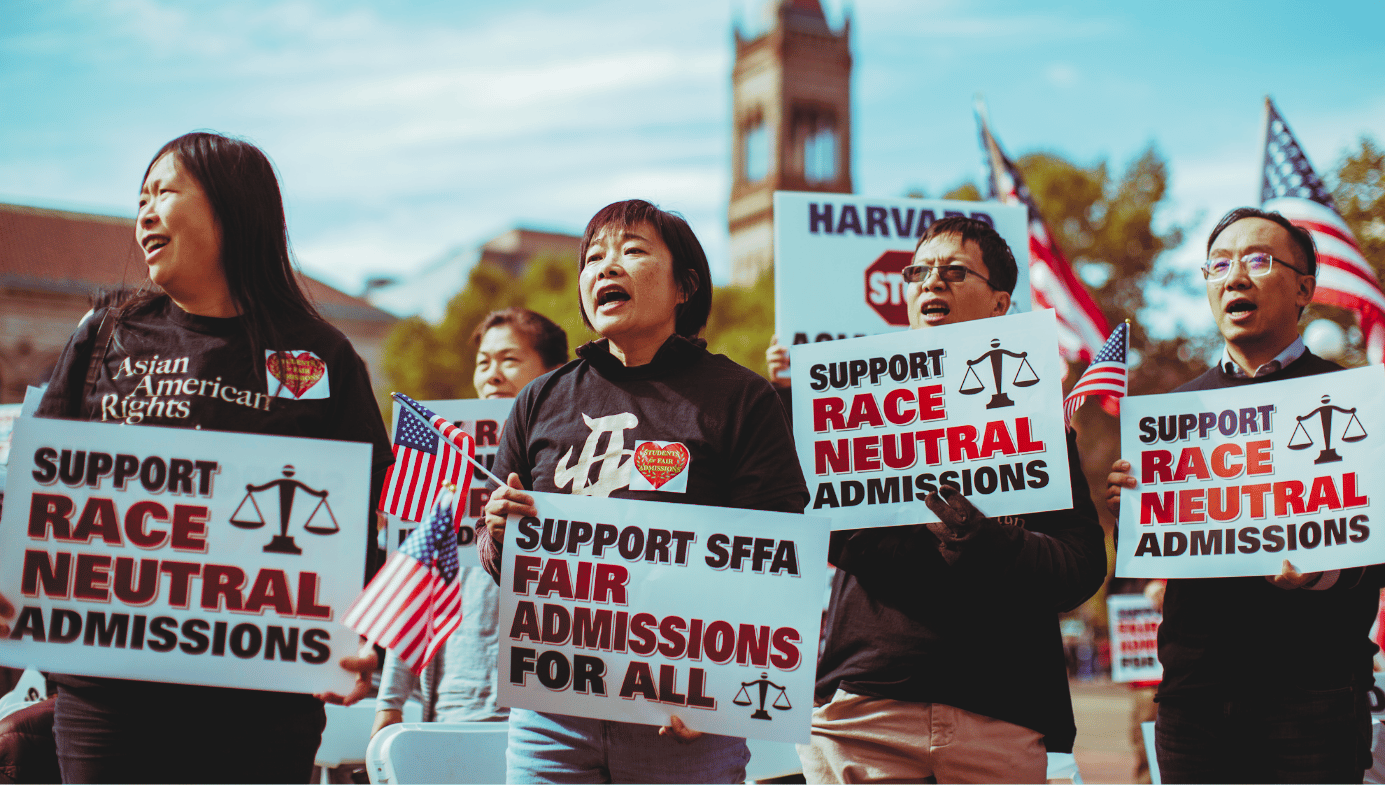Education
The Peculiar Silence in the Students for Fair Admissions Decision
Are racial preferences in university admissions really dead?

To hear almost anyone tell it, racial preferences in university admissions are dead. But this pervasive sense of finality belies a curious silence in the Supreme Court’s decision in Students for Fair Admissions. The Court never expressly overrules the line of precedent that has allowed universities to discriminate for the last 50 years. Without a direct overruling, how can we know whether the Supreme Court has ended racial preferences or simply renovated the existing case law?
A careful reading of the Chief Justice’s opinion and an understanding of his judicial philosophy indicates that the Court has left universities with no realistic means to rely on racial preferences in admissions, even if the case law stating otherwise lingers in a vegetative state. Four key cases have formed the foundation for racial preferences in student admissions, with a case called Grutter v. Bollinger as the cornerstone. The Students for Fair Admissions case presented the Court with a choice: either apply the existing test under Grutter and friends or uproot the whole line of precedent.
And here’s the odd silence sitting at the very heart of Students for Fair Admissions: It is no easy task to tell which approach the Chief Justice took in his majority opinion. His silence on whether Grutter remains good law is even more striking given that the petitioner in the case and 23 amici supporting the petitioner openly called for the Court to overrule Grutter. Everyone expected the Court to say something about it.
Yet the Chief Justice only seemed to hold that Harvard and UNC did not satisfy the existing test for racial preferences in admissions, known as strict scrutiny. Sort of. While he did not overturn or even openly challenge Grutter and friends, his opinion seems to directly contradict the key holding in those cases. So, did he change the rules entirely? That question requires us to answer two others: Does Students for Fair Admissions conflict with Grutter’s reasoning and thus quietly bury it? And would the Chief Justice have had a reason for holding a private graveside funeral for Grutter without publishing an obituary?
The answer to the first question seems to be yes, but it requires some unpacking. The Chief Justice seems to part ways with Grutter’s foundational holding. Grutter’s “strict scrutiny” test requires two things: first, that the university’s use of race be justified by a compelling interest, and second, that the university pursue that interest in a narrowly tailored way (i.e., with a scalpel rather than a chainsaw).
Grutter and friends said universities had a compelling interest in the “educational benefits” of a diverse student body. Racial diversity on campus, said Grutter, “promotes cross-racial understanding,” “breaks down racial stereotypes,” and makes classroom discussions “livelier, more spirited, and simply more enlightening and interesting.” The Court lumped on additional aphorisms in a follow-up case called Fisher II: the “robust exchange of ideas,” “preparation for an increasingly diverse workforce,” and “cultivation of a set of leaders with legitimacy in the eyes of the citizenry.”
This “educational benefits” interest is the key to racial preferences in student admissions, as the Supreme Court has rejected every other proposed interest, such as remedying past racial wrongs or mirroring society’s racial demographics. But the Chief Justice’s opinion seems to now reject the “educational benefits” interest, leaving racial preferences without any compelling interest at all.
In articulating their interests, Harvard and UNC figured they would be safe if they just paraphrased the interests that the Supreme Court approved in Grutter and Fisher II. But the Chief Justice was not satisfied. He claimed that the universities’ interests—lifted almost verbatim from the Court’s own opinions—“are not sufficiently coherent for purposes of strict scrutiny.” How, Roberts opines, can a court decide whether an exchange of ideas has achieved peak robustness? These interests, Roberts claims, are “inescapably imponderable.”
Right or not—and I think he is right—this is a clear departure from Grutter and Fisher II. In fact, the Chief Justice here makes the exact argument that the dissenters made in Fisher II. That dissent, joined by the Chief Justice, argued that the University of Texas had not articulated its interests “with any degree of specificity.” And the interests asserted by the University of Texas were—wait for it—almost exactly the same as the ones asserted by Harvard and UNC: cross-racial understanding, stereotype obliteration, and so on.

In other words, the Chief Justice seems to have quietly transformed the Fisher II dissent into the law of the land. And, to quote the mystic Sybil Trelawney from Harry Potter, “neither can live while the other survives”—if the Chief Justice has breathed life into the Fisher II dissent, then Grutter is dead. Or is it “mostly dead,” as the much more competent mystic Miracle Max might put it? After all, perhaps universities can satisfy the Chief Justice’s demand for greater specificity in articulating their interests in the educational benefits of diversity. I suspect this is an impossible task, and I suspect the Chief Justice knows it.
Consider, for example, how a university might make its interests more concrete and measurable, as the Chief Justice demands. A university could say, for instance, that cross-racial understanding will be achieved once our student body is 30 percent black and Hispanic. More specific? Yes. But the university will have only veered away from Scylla (overly vague interests) to run into the domain of Charybdis (unlawful quotas). While the Supreme Court gave its blessing to racial preferences, it has always made one thing clear: racial quotas or their functional equivalents are off-limits. In fact, under Grutter and friends, universities must be fuzzy about how much they rely on race because race should be just one unquantified factor in a holistic review of a student’s application. This is why the Court struck down a point system used by the University of Michigan that gave minority students a 20-point boost.
So “cross-racial understanding” is too vague, but anything too specific strays into quota territory. Universities facing this conundrum have drummed up a magical notion called “critical mass.” How will courts know when a university has achieved its diversity interests? When they’ve reached a critical mass of minority students. And what is a critical mass? Whatever number of minority students is enough to satisfy the university’s diversity interests. Grutter blessed this dizzying circularity, which always winds back to whatever the university deems best. There is simply no daylight left between the overly vague “educational benefits” of diversity and the forbidden quota.
Some observers have pointed to a passage toward the end of the Chief Justice’s opinion as evidence that he blessed narrow uses of racial preferences. He writes that universities can still consider “an applicant’s discussion of how race affected his or her life, be it through discrimination, inspiration, or otherwise.” But I don’t see this as a racial preference at all. For instance, I have white cousins who grew up in China. If one of them wrote a personal essay about the discrimination he faced growing up, then that could be weighed alongside a black applicant’s essay about experiencing discrimination in the United States. This experiential focus is distinct from what the Fisher II dissent called a “bare racial stamp,” in which my cousin’s race would count against him, and the black applicant’s race would count in his favor.
So Grutter seems to be gone, and racial preferences with it. Justice Thomas, in concurrence, agrees: “The Court’s opinion rightly makes clear that Grutter is, for all intents and purposes, overruled.” And Justice Sotomayor’s dissent agrees with Justice Thomas. If the Chief Justice thought this an unfair characterization of his opinion, he could have said so. Instead, he kept his silence on Grutter’s fate despite responding to other criticisms leveled by the dissents.
This still leaves the question of whether the Chief Justice might have had a reason not to just expressly overrule Grutter and friends if he really meant to end them entirely. The somewhat unsatisfying but likely answer is that the Chief Justice simply does not like to overrule precedent. He is known for his distaste for big dramatic swings. In 2005, at his Senate confirmation hearing, he said, “It is a jolt to the legal system when you overrule a precedent,” which “plays an important role in promoting stability and evenhandedness.” His cautious approach was on display recently in Dobbs, where he departed from the majority on overruling abortion precedent and pushed for a “more measured course.”
This would not be the first time the Chief Justice has been accused of overruling major precedent on the sly. In a 2007 campaign finance case that paved the way for Citizens United three years later, Justice Scalia accused the Chief of overruling precedent “without saying so,” calling his opinion “faux judicial restraint” that only causes “judicial obfuscation.” Students for Fair Admissions may be another example of the Chief Justice grappling with his own discomfort about overturning precedent.
Combining a careful look at Grutter and an understanding of Chief Justice Roberts’s reluctance to expressly overturn precedent, we can conclude that Grutter has been silently interred. But we will doubtless see pundits, jurists, and universities pointing out this silence and seeking to leverage it to their own ends—namely, reviving racial preferences. That’s the gamble the Chief Justice has taken. By failing to expressly overrule Grutter, he’s left room for mischief and confusion.
This has happened before. Justice Scalia once referred to a precedent that refused to die despite repeated opinions disavowing it as a “ghoul in a late-night horror movie that repeatedly sits up in its grave and shuffles abroad, after being repeatedly killed and buried.” Grutter may lie uneasy in its coffin as well. One could wish the Chief Justice had gone for the head and put a clear end to Grutter to avoid this trouble. But read in good faith and with both eyes open, it is not too hard to follow the Chief Justice’s reasoning: racial preferences are gone for good.






